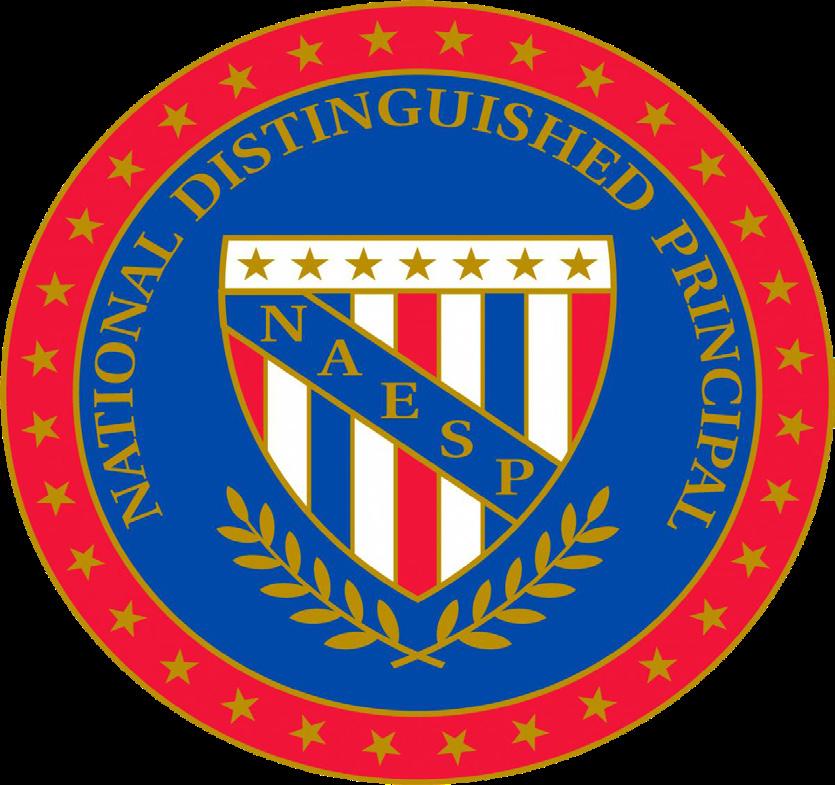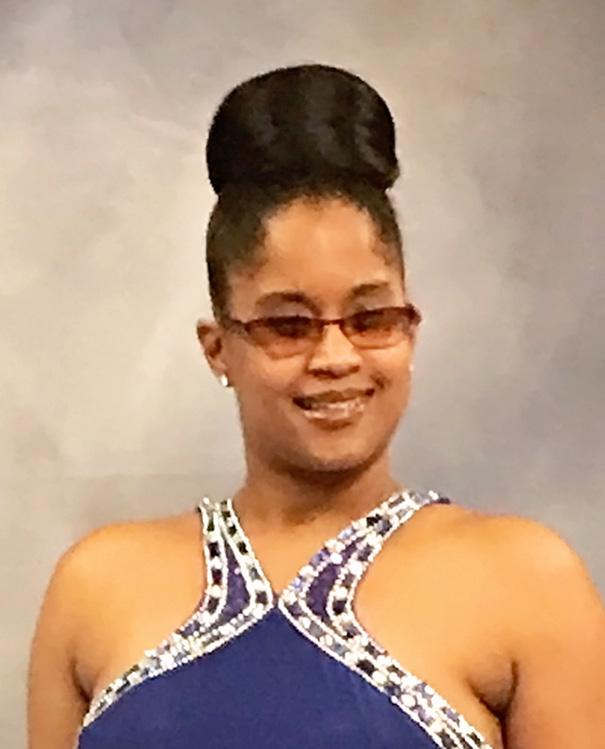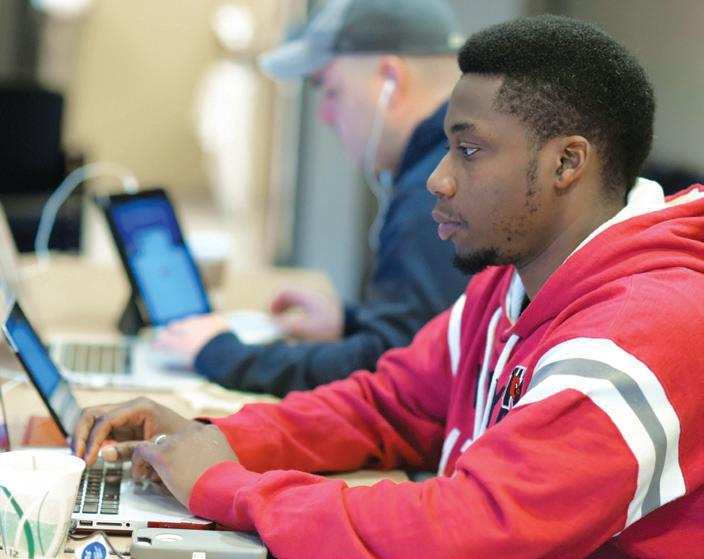
9 minute read
NAESP RECOGNIZES TOP US PRINCIPALS
during National NAESP Recognizes
Sixty-two outstanding elementary and middle school principals from across the nation and abroad have been named 2017 National Distinguished Principals (NDPs) by the National Association of Elementary School Principals (NAESP). The pre-K–8 principals were honored October 13, 2017, at an awards banquet in Washington, DC.
Advertisement
Established in 1984, the two-day NDP celebration program, which was held at the Capital Hilton Hotel this past October, recognizes public and private school principals who make
14 The 2017–18 Class of National Distinguished Principals

superior contributions to their schools and communities. The 62 principal honorees were selected by NAESP state affiliates and by committees representing private and overseas schools. The event takes place annually in October, which is National Principals Month.
“Principals create the necessary conditions for providing students with the well-rounded education that they need,” said Dr. L. Earl Franks, CAE, NAESP’s executive director. “NAESP’s National Distinguished Principals program recognizes the outstanding leadership of highly suc
Top US Principals Principals Month
Ohio’s 2017–18 NDP Rhonda Peebles



Rhonda with NAESP president, Brian Partin
cessful principals and their commitment to the children they serve, to their local communities, to their state, and our nation. Working in partnership with classroom teachers and other educators, these principals provide the necessary leadership to improve student achievement and ensure every student has a pathway to success.” Criteria for selection of the principals require that the honorees are active principals of schools where programs are designed to meet the academic and social needs of all students and where there are firmly established community ties with parents and local business organizations. Ohio’s National Distinguished Principal, Rhonda Peebles, principal in the Columbus City School District, joined OAESA’s executive director, Dr. Julie Davis, to attend the event in October. NOTE: A list of the 2017 National Distinguished Principal award recipients as well as their biographical information can be accessed by visiting the following: http://www. naesp.org/2017-class-national-distinguishedprincipals.
& Co-Teaching Co-Serving

“Fairness does not mean everyone gets the same. Fairness means everyone gets what they need.” —Rick Riordan, The Red Pyramid
Tammy Wagner, EdD I n classrooms with students with special needs the above quote is common. Often, the words “in order to be successful” are added to the end of the quote. This quote may appear, at first glance, to be at odds with the definition of equity—“the quality of being fair and impartial.”
As educators, how can we reconcile the ideas of equity and fairness with regards to our students in the classroom? Our students are as diverse in looks, home life, socio-economics, and academic, behavioral, and emotional needs as this year’s weather patterns. As educators, we are tasked with helping all students grow in their learning… by showing a year or more of growth according to value-added criteria or student learning objectives (SLOs). In the case of our students with special needs, our goal is typically to show more than a year’s worth of growth in order to “close the gap.” In order to achieve such a goal, additional resources and supports may be needed.
Nearly 60 years ago in Wyandot County, the question was whether or not students with cognitive deficits were capable of learning. Mrs. Angeline Eyestone and the Sycamore Garden Club took on a project to see if some local children with “mental handicaps” (historic term) could learn. In May of 1968, they set up the first experimental classroom of six kids in the basement of Christ Lutheran church. From that small start came about Wyandot County’s current Board of Developmental Disabilities (WyCBDD), locally know as Angeline School and Industries.
Established in 1967 as part of the Ohio Revised Code, today there are 88 boards of developmental disability, one for each county. There is no longer a debate about whether or not students with cognitive disabilities should be educated or are capable of learning. The debate is not about if students with special needs should be educated, but rather how, where, and at what level. The debate focuses on what the educational programming for these students looks like, specifically, in regards to access to the general education curriculum and inclusive teaching practices in general education classrooms. This applies to all children, regardless of whether they have a vision impairment or hearing impairment or meet one of the other 11 criteria qualifying for a disability.
The trend over the past ten years in the United States and other countries is to educate students with disabilities and their typically developing peers together. In educational terms, this practice is know as inclusion or “mainstreaming.” One strategy that supports inclusion in general education classrooms is co-teaching.
Our journey into co-teaching at Carey Elementary began approximately three years ago when our school partnered with Bowling Green State University (BGSU). BGSU received a grant to implement a dual licensure program for its teacher candidates. The grant was designed to offer an option to preservice educators to enroll and graduate in four years with both a preschool through grade three early education license and preschool through grade three special education license. Our school collaborated with BGSU and placed teacher candidates with our experienced intervention specialists as their mentors as well as with general education teachers. Both mentors and teacher candidates participated in two hours of professional development on co-teaching strategies. They worked to implement one or more of those co-teaching strategies over the course of the school year. At the time, the co-teaching practices occurred either within the structure of a “resource room” or pullout program for students with special needs, or within the context of the general education classroom. With regards to implementing professional development or learning anything new, I am a big believer in methodology. Generally speaking, I try to take the following approach:
1. Assess where individuals are in their learning. 2. Start them in their comfort zone. 3. Build success and confidence. 4. Create small amounts of cognitive dissonance periodically. 5. Repeat steps 3 and 4 as needed to move individuals forward in their learning.

In thinking about our teachers’ comfort zones here at Carey Elementary, I intentionally chose to introduce co-teaching practices with preservice teachers. My staff at the time was mixed. Some were experienced mentor teachers, and some would be first-time mentors. All of our staff had a limited knowledge of co-teaching strategies—meaning, our teachers could name or describe two or fewer co-teaching practices. Nevertheless, all of the staff members articulated to me that they could visualize themselves in the roles of mentor teachers.
The list and name of co-teaching practices varies according to different researchers and programs. BGSU uses definitions and examples developed by The Academy for Co-Teaching and Collaboration at St. Cloud State University and TWH Consulting (2015). The original research was funded by a US Department of Education Teacher Quality Enhancement Partnership Grant and has been adapted from the work of Lynne Cook and Marilyn Friend (1995). These co-teaching strategies include the following:
• One Teach, One Observe: One teacher has primary responsibility, while the other gathers specific, observational information on students or the (instructing) teacher. • One Teach, One Assist: One teacher has primary responsibility, while the other assists students with their work, monitors behaviors, or corrects assignments. • Station Teaching: Instructional content is divided into parts, and each teacher instructs one of the groups— often an independent station will be used along with the teacher-led stations. • Parallel Teaching: Each teacher instructs half the students with the same instructional material and instructional strategies. • Supplemental Teaching: One teacher works with students at their expected grade level, while the other
continued on next page...
...continued from previous page
teacher works with those students who need the information retaught or extended. • Alternative or Differentiated Teaching: Alternative teaching strategies provide two different approaches to teaching the same information. The learning outcome is the same. • Team Teaching: Both teachers are actively involved in the lesson with no prescribed division of authority.

ing toward providing a continuum of special education services to our students. Some of our intervention specialists and general education teachers have again signed up to mentor BGSU teacher candidates, so the co-teaching at this level will continue. At the same time, we have challenged our staff to begin co-teaching among themselves by partnering intervention specialists with general education teachers one or more days a week for approximately 40 to 60 minutes. The goal is to use co-teaching as a vehicle to support both general education
As BGSU worked to develop the skills of preservice teachers in co-teaching, one of the challenges they faced as an organization was the lack of working educators in the K–12 environment who were familiar with such practices. By partnering with our school and offering free professional development, the university was able to build capacity in its K–12 partners to support their co-teaching methodologies. Together, we were able to engage in a process of “simultaneous renewal,” whereby both partners—Carey staff as well as BGSU students—were able to benefit and learn together, enhancing practice and forging a stronger educational system for both mentors and preservice teaching candidates.

The dynamic for this type of co-teaching is a little different as it involves two equals with shared accountability and equal power. The general educator, typically, is an expert in content and grade level curriculum while the intervention specialist has expertise in instructional strategies, content delivery methods, and supports. One of the resources that we are using to advance our staff ’s knowledge this year is provided by the Ohio Leadership Advisory Council (OLAC) in the form of their “learning supports” module under section eleven “methods that modify structures.” This module has links to video examples of co-teaching from The Curry School of Education at the University of Virginia and from Shawnee State University and Portsmouth Elementary School in Ohio. We predict that the use of a co-teach/co-serve model will have benefits for learners at all levels.
Wendy Murawski, PhD Executive director and Eisner endowed chair Center for Teaching and Learning California State University, Northridge www.2TeachLLC.com www.csun.edu/ctl wendy.murawski@csun.edu Twitter: @WWMurawski
Sonya Kunkel skunkel@crec.org www.crec.org author of Advancing Co-Teaching Practices: Strategies for Success
Tammy Wagner, EdD, is an elementary principal at Carey Elementary. She has more than 20 years of experience as a teacher and administrator. She also works in grant writing, federal programs, and professional development in preschool through grade 12 educational settings. About the Author









